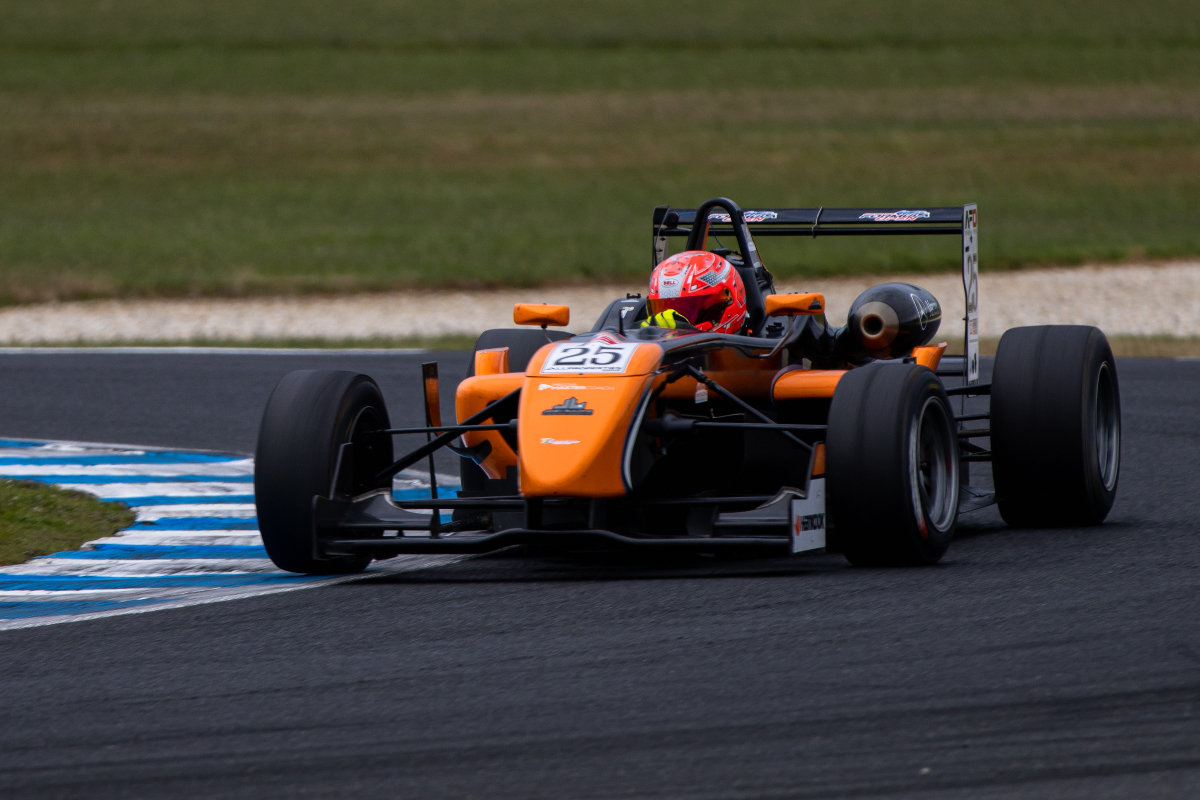
Photo: Brice J Hildred
Australian F3 is no more, and an open formula series has been launched in its place. Tim Macrow, the brains behind the new series and an F3 champion, explains the plan behind Australian Formula Open
Formula 3 as a category ended in August 2021, when BRDC British F3 rebranded to GB3. It was thought to be the last move by the FIA, the exclusive holder of the rights to the F3 moniker, in its plan to streamline the single-seater ladder at the tertiary level.
Other F3 series had already been ended, the FIA’s own two-tier model of F3 had been shortlived after deciding to homologate the lower tier as Formula Regional, and F3 series in Europe and Japan had to adopt new cars built to non-F3 specifications due to the exclusivity of rights.
In some cases of series with contracts that gave them permission to use the F3 moniker, primarily because they used F3 cars, they still found themselves having to change name. Australian F3 hung on to such status until the end of 2022, as a series using previous-generation F3 machinery, but eventually that came at the expense of court cases and the series’ existence.
There have been many different single-seater series in Australia since 1950s, and the mantle of being the top level of open-wheel racing in the country has been recognised with ‘Australian Drivers’ Championship’ status and the awarding of the national governing body’s ‘Gold Star’ to the champion each year. Australian F3 had that status from 2005 to 2014, and it is now held by S5000: a modern day interpretation of the Formula 5000 category that used to exist above Formula 2 as a cheaper alternative to Formula 1.
S5000 was first thought up in 2016, but didn’t get off the ground properly until 2021 after behind-the-scenes politics and the COVID-19 pandemic delayed progress in getting the cars and series ready. Australian F3 was also hit hard by the pandemic, with no racing taking place in 2020 and only one round being completed in 2021 before restrictions returned. It was during this period that the idea for a new series, Australian Formula Open, emerged.
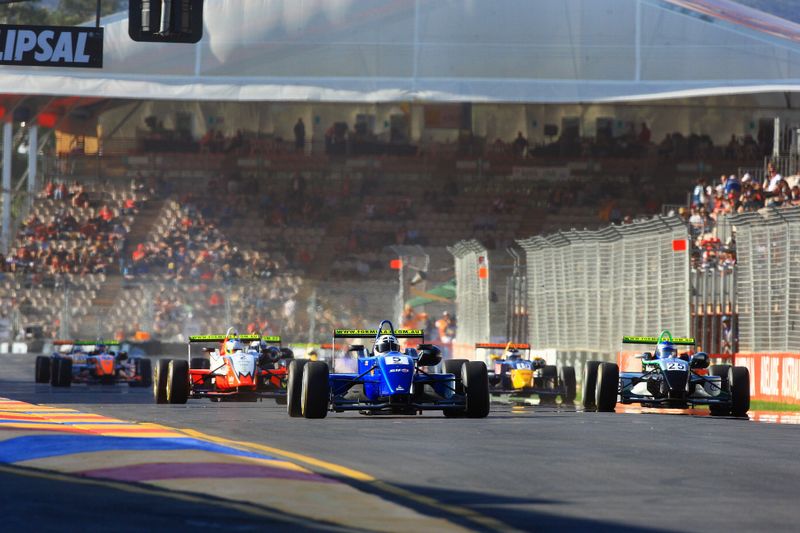
Photo: Australian F3
“It’s sort of a product of the pandemic I suppose,” recalls Tim Macrow, the creator of Australian FOpen who is boss of an eponymous team that previously competed in Australian F3 and a two-time champion (2007 & ’13) in that series himself.
“In 2020 we did nothing basically, a lot of people down in Melbourne were locked down for a couple of years. They sort of relaxed the COVID-19 rules for a month or two there, and we got one race meeting in at Sandown in December 2020.
“It was a race meeting put together by the MG Car Club. We hadn’t had a race meeting in that long that it was a good national-level race meeting [to join]. Phil from the MG Car Club rang me and said ‘can you put together something open-wheel so we can have some variety?’.
“So we put together a Formula Free race which had all sorts of things. We had F3 cars, Toyota Racing Series cars, we even had Radicals [open-top prototype sportscars] to sort of bump up the field. And that’s where it all started. We got 15 cars on the grid, which is really good. Everyone just wanted to come out and race. And we had some historic cars, even a Formula Holden turned up. It just worked out really well in that you had so many different cars that got their laptime in a completely different way, but everyone was quite even. It was more arse than class [for pace].
“The race was great, everyone loved it, and we went to do it again in 2021 but kept getting cancelled. And that’s where it started, that was the state-level stuff. Really sort of low-level ‘let’s have some fun’ sort of stuff. Towards the end of 2022, it sort of became apparent that Australian F3 wasn’t going to be allowed to use the F3 name anymore. We sort of know when we got towards the end of 2021 that was probably going to be the case, and everything had to be wound up in that regard.
“We’ve got a lot of F3 cars down here, and we’ve got a gaping hole in Australian motorsport for a development category. Either coming from Formula Ford, which is more state-based, or even going straight into FOpen from karts. So I reckon there’s a hole there. Kids shouldn’t be going straight from karts to S5000, it’s the most brutal car you’ll ever drive. So Australian F3 has pretty well morphed into Australian FOpen.
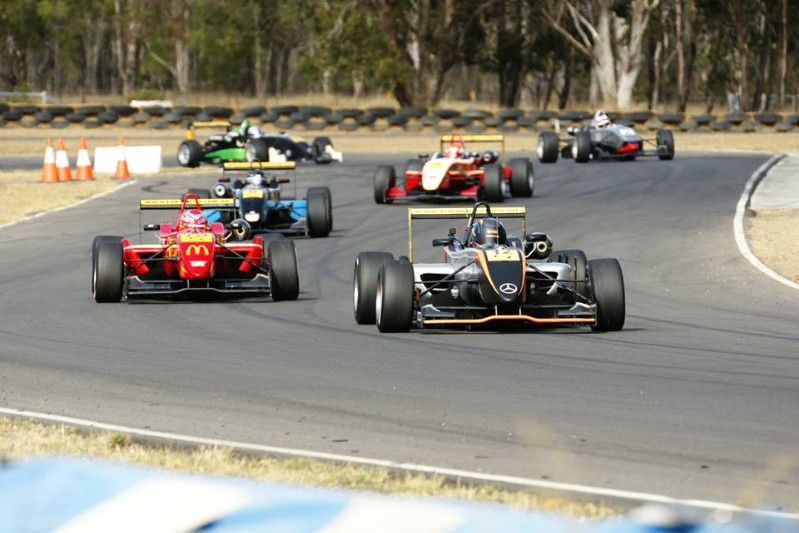
Photo: Australian F3
“We ran our first race meeting at Philip Island with the last round of Australian F3 in that field. But what we’re doing, to bump up the field to make sure we’ve got enough cars on the grid, is running a class format and it’s all going to be up to two litres. There might be a couple of cars which are invitational which may go over that, but we just look at how quick they are and laptime and all that sort of thing.
“F3 is the top class, and we have a lot of Formula 4 cars down here – we still do the Ferrari Driver Academy [scouting for the region]. Even I’ve got an F4 that we go testing with. So it would be nice to get kids some experience in actually racing them before they go over to Europe or America or wherever they want to go. We’ll have a class for those, then we’ve got lots of TRS cars as well. To have two or three classes within FOpen, catering for these cars, we should have decent grids and some good racing throughout the field.”
Although the occasional Dallara F312 appeared in Australian F3, the majority of the cars tended to be several generations old, with the Dallara F308 and its F305 predecessor the two most popular models.
“I’ve got one F312 here. But we’ve got the majority of the F311s,” Macrow says. “The plan is to have more F312s and F317s coming. Some time this year we’ll have some more cars coming, and slowly in the next two or three years we have to progress.
“We’ve got a decision to make whether we go with FRegional cars, with halos, or whether we go [to Euroformula’s Dallara] 320s. Theoretically we could buy some 320 tubs and turn our 312s into 320s, but it just depends – we have to sit down and actually work out which direction we go in the future and what cars we actually end up with down here. Because we can’t keep running these cars forever.
“There’s definitely got to be a progression there, but because these cars are already local, they’re still somewhat relevant, it’s a good starting point, we can do it at a good price.”
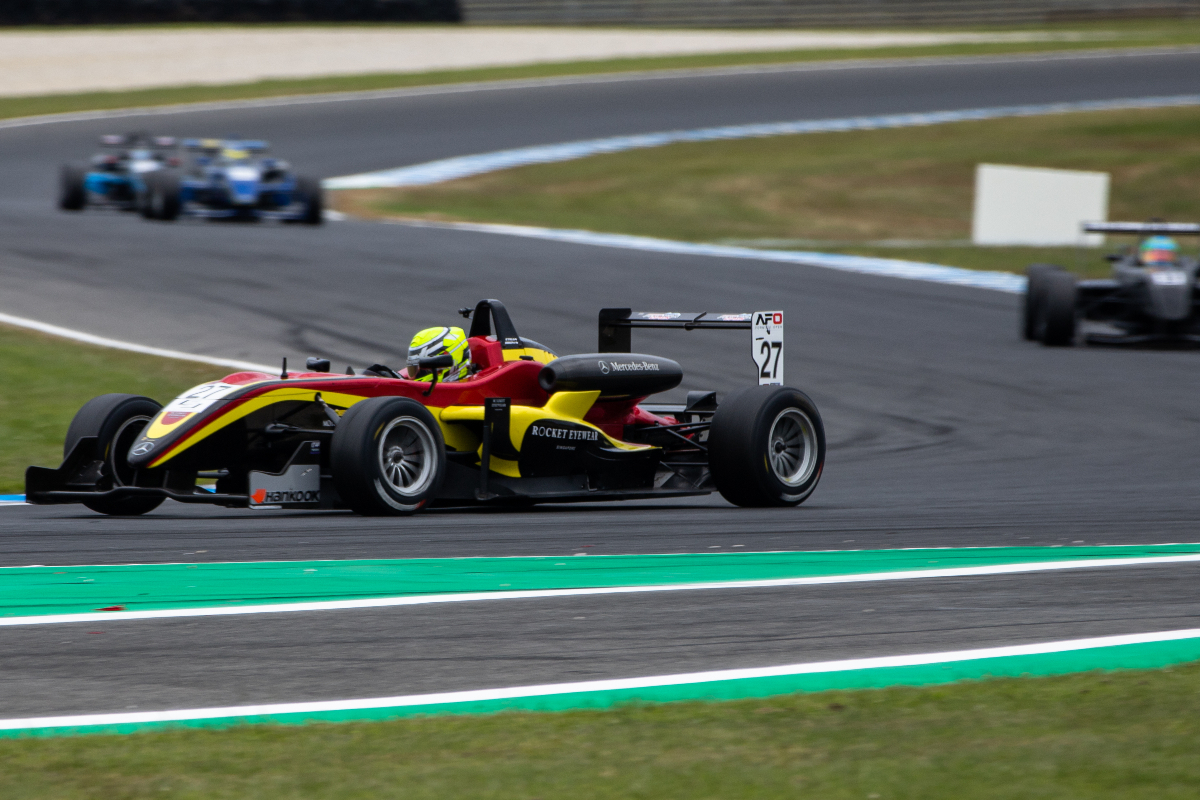
Photo: Brice J Hildred
While junior single-seater series in Europe tend to be team-led, in America there are more family-run cars and at the club level in the United Kingdom there are lots of privateer racers. In Australia, the market is “a mixture” of all three.
“For example I’ll have five cars available for lease for young drivers. I’ve already got a couple of young drivers locked in. There are two or three teams that have cars available that are professionally run. And there’s professional owner-drivers as well, there’s a good mixture.
“We’ve got AGI Sport, who are doing all sorts of things with the FDA and have five or six F4 cars, which are a very professional team. Up the front there will be some professionally-run cars with some young blokes in them, having a crack. It will be good.”
After the question of where the cars come from and who runs them, the next important focus for an open formula series is how many different engine builders are needed, and if any of them are local local given many F3 cars and engines originate from Europe.
“It is difficult, I’m honest,” Macrow states. “I deal directly with HWA, and in the past and up until recently we’ve been sending our engines back and forth to Germany to get rebuilt. But we do have a HWA representative down here who is building engines, so we can do our own down here.
“You’ve got the choice, whether you’ve got the time in between race meetings – because we’re so far away it takes probably a month turnaround to get the engines to HWA and to get them back. We can buy parts and build our own engines down here, and there is a representative down here. HWA have a couple of guys down here who look after the whole of Asia and for their GT programmes, so we are fairly self-sufficient down here and we can do our own thing.”
One engine supplier that is overseas, but fairly local in comparison to HWA, is Toyota Gazoo Racing New Zealand. Their engines appear in the previous-generation TRS cars that FOpen seeks to attract [pictured below].
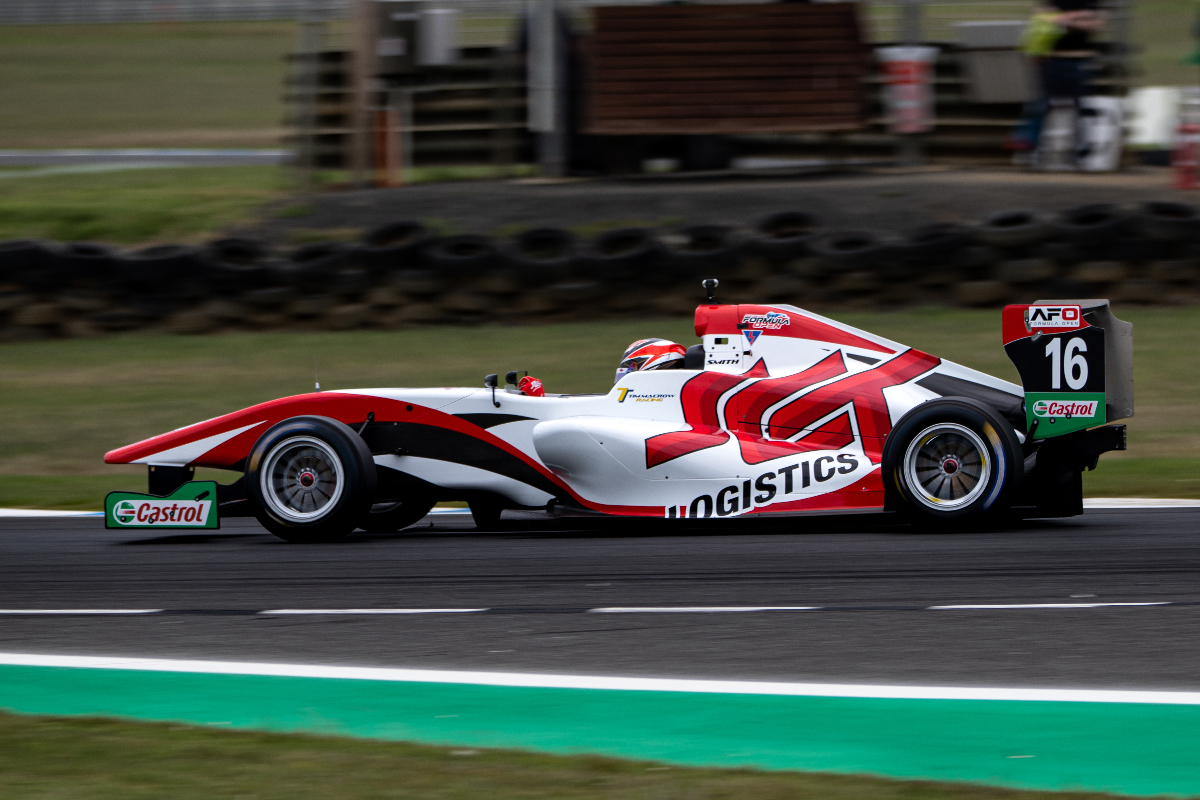
Photo: Brice J Hildred
“Nico [Caillol, TGR NZ motorsport manager] and the TRS guys over there are very helpful. I have a Tatuus FT-50, they’re super helpful and they’re close to home, so we can send our stuff back there and get it done and get it back relatively quickly. That’s a really good situation. The gearboxes we can do here locally. I have an amazing relationship with Holinger down here who do all the S5000 gearboxes, so we can get all that sort of stuff done fairly locally.”
Due to its class strucuture, FOpen isn’t using the standard FIA points system (25-18-15-12-10-8…) and has instead adopted a system similar to Australian F3’s. The first two races of a weekend award 12 points to the winner, then victory in the longer feature race that ends each round is worth 20 points, with 15 and 12 points respectively for the next two podium positions. There will be overall and class points, and if a driver from a lower class starts winning races outright then they could become overall champion.
The inaugural FOpen races held at Philip Island’s ‘Island Magic’ meeting as a Victorian state event last November featured 28 cars, including the drivers signing off Australian F3, and there had been 30 entered.
“We actually had more guys wanting to come, but I capped it at 30 for garage [space]. We really only planned on 20 cars and we got a really good response,” says Macrow.
“For us down here, Island Magic is a really, really, really big race meeting. I think 300 cars or something turned up. 30 is a good number for us. If this year we can get anywhere between, it will ebb and flow a little bit, but if our minimum is 15 we’ll be really, really happy. Because sometimes when we go up to Queensland, stuff that’s really, really far away, sometimes the numbers can drop a touch.”
Round one of the 2023 series took place last weekend at Winton Motor Raceway in New South Wales, and the races featured 17 cars. There were 12 Dallara F3 cars ranging from the F304 to 2012’s F312, and a 34-year-old Reynard F3 car, a 31-year-old Reynard 92D built to Formula Holden specifications, five first-generation FIA F4 cars and a Formula Renault 2.0 car.

Photo: Brice J Hildred
Several of the cars had interesting histories, with many of Australia’s F3 chassis having previously been raced in Europe and then at the Macau Grand Prix before being sent down under rather than shipped all the way back home. Macrow himself runs cars previously raced by Valtteri Bottas and Romain Grosjean.
The colossal size of Australia, much like the USA, brings impracticalities when organising national championships that want to attract car owners from all over the country.
“It’s probably mainly between Victoria and NSW, where the majority of the cars are. And with our calendar, that’s where the majority of the race meetings will be. Trying to cater for where all the cars are so they will come to the race meetings. That’s our biggest thing, travel, because of how far we have to go. We have to keep an eye on that to keep it cost-effective.
“We just want to get the open-wheel scene happening back down here. We don’t have the population down here to sustain several different categories, so that’s why we need to do a combination grid, in my belief. And with all the cars we have down here, it’s the way to go.”
For FOpen to work as a feeder series, to S5000 and championships abroad, its position in the single-seater landscape needs to be established and work has to be done to build connections to the levels above and below it in motorsport.
S5000, from a marketing perspective, is Australia’s “version of Super Formula; our top category, one you aspire to” and one day potentially a genuine career alternative to the nation’s biggest series: Supercars.
“There’s several things in the works at the moment which haven’t been finalised which we’re trying to get over the line. Partnerships with other categories overseas or locally, so we can help those kids progress, and definitely that’s something we kind of had in place with F3, and I’m just trying to get those things happening which will hopefully be announced soon where we can help those kids progress from our category either overseas or onto the next one up.
Australian F3’s top graduates
Peter Hackett – 2nd in 2005, ’12 & ’19 Australian GT – 2001 champion
Will Power – 2014 & ’22 IndyCar champion, 2nd in 2010, ’11 & ’12 IndyCar – 2nd in 2002
Michael Caruso – 10th in 2014 &’16 Australian Supercars – 2003 champion
Tim Slade – 5th in 2012 Supercars – 10th in 2004
Marco Mapelli – 2019 GT World Challenge Europe champion, 2nd in 2014 & ’15 Italian GT, 2nd in 2015 Bathurst 12 Hours, 5th in 2018 GTWC Asia – 5th in 2007
Nick Percat – 7th in 2020 & ’21 Supercars, 2011 Bathurst 1000 winner – 8th in 2008
Earl Bamber – 2015 & ’17 Le Mans 24 Hours winner, 7th in 2008-09 A1GP, 2014 Porsche Supercup champion – 13th in 2008
Mitch Evans – 2nd in 2021-22 FE, 4th in 2014 GP2, 2012 GP3 champion, 2010 & ’11 Toyota Racing Series champion – 2nd in 2010
Rio Haryanto – 24th in 2016 F1, 4th in 2015 GP2, 7th in 2011 Auto GP, 5th in 2010 GP3 – 8th in 2009
Ben Barker – 2020 Dubai 24H winner, 6th in 2017 WEC GTEAm class, 6th in 2014 Porsche Supercup – 2010 champion
Josh Burdon – 2014 Asian V8 champion, 2nd in 2017-18 Asian Le Mans Series LMP3 class – 8th in 2010 & ’11
Cameron Waters – 2nd in 2020 & ’22 Supercars – 13th in 2012
“I did a fair bit of stuff in the US so I’ve got some relationships over there with people I’m talking to now, and there’s New Zealand and there’s Asia as well. There’s a few people we’re talking to to help those kids progress out of our category, and obviously S5000 is one of them as well.”
Australian F3 may have died, a demise influenced by factors far beyond grid numbers alone, but FOpen can effectively continue what it offered. F3 used to be a regular support category to the Australian Grand Prix, there was an Indy F3 Challenge supporting Champ Car’s visit to Surfer’s Paradise, and there was a Tasman Superprix that ran for several years which was Australia’s answer to Macau and Europe’s old Masters of F3 race.
Now that the new FIA F3 Championship is supporting the grand prix, the top level of American single-seater racing is no longer visiting Australia and S5000 exists, the space that domestic winged junior single-seaters exists in is going to be different.
Potentially that’s a stronger position than previously, with racing in FIA F3 a more achievable target for a young Australian driver than racing in the grand prix it supports, so Australia having its own winged series helps to bridge the gap. And, as mentioned, making it a multi-category championship was the starting point needed for 2023.
Australian F3 champions
| Year | Champion | Team | Car |
|---|---|---|---|
| 1999 | Paul Stephenson | Titan | Dallara F395 (TOM’S Toyota) |
| 2000 | Paul Stephenson | Titan | Dallara F395 (TOM’S Toyota) |
| 2001 | Peter Hackett | Piccola Scuderia Corse | Dallara F398 (Alfa Romeo) |
| 2002 | James Manderson | Team BRM | Dallara F301 (Spiess Opel) |
| 2003 | Michael Caruso | Dallara F301 (Novamotor Fiat) | |
| 2004 | Karl Reindler | Team BRM | Dallara F301 (Spiess Opel) |
| 2005 | Aaron Caratti | Insight F3 | Dallara F304 (Sodemo Renault) |
| 2006 | Ben Clucas | Team BRM | Dallara F304 (Spiess) |
| 2007 | Tim Macrow | Scud Racing | Dallara F304 (Spiess Opel) |
| 2008 | James Winslow | Team BRM & Astuti Motorsport | Dallara F307 (HWA & Renault) |
| 2009 | Joey Foster | Team BRM | Dallara F307 (HWA) |
| 2010 | Ben Barker | Team BRM | Dallara F307 (HWA) |
| 2011 | Chris Gilmour | Gilmour Racing | Dallara F307 (HWA) |
| 2012 | James Winslow | R-Tek Motorsport | Dallara F307 (HWA) |
| 2013 | Tim Macrow | Tim Macrow Racing & Team BRM | Dallara F307 (HWA) |
| 2014 | Simon Hodge | Team BRM | Mygale M-11 (HWA) |
| 2015 | Jon Collins | Gilmour Racing | Dallara F311 (HWA) |
| 2016 | Tim Macrow | Alpine Motor Sports | Dallara F307 (HWA) |
| 2017 | Calan Williams | Gilmour Racing | Dallara F308 |
| 2018 | Harri Jones | Jones Racing | Dallara F308 (HWA) |
| 2019 | John Magro | R-Tek Motorsport | Dallara F311 (HWA) |
| 2020 | no champion | ||
| 2022 | Noah Sands | Gilmour Racing | Dallara F308 (HWA) |